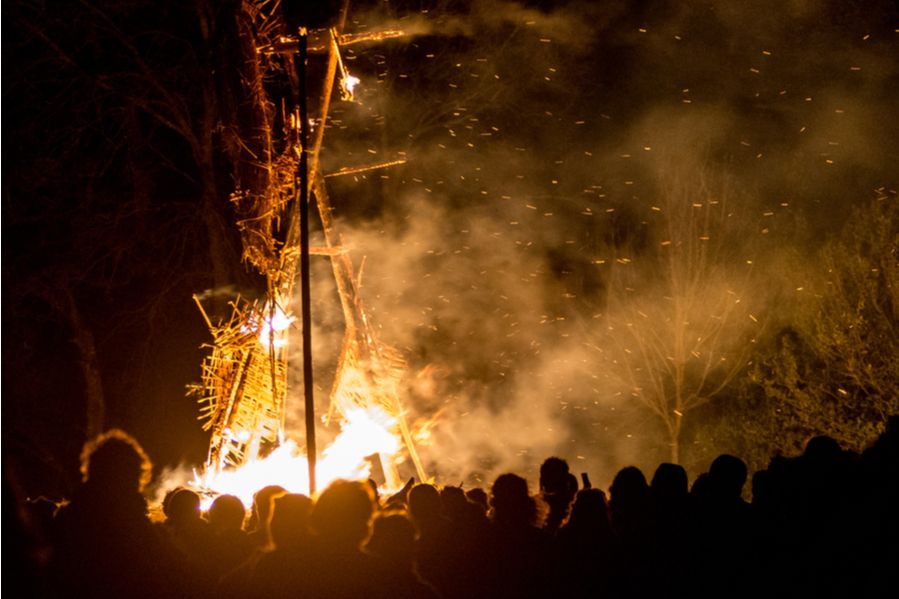
Most people think of May Day as a festival about welcoming spring where people gather flowers and children dance around a pole.
Well, that or a day for workers to rise up and protest for better rights.
But did you know that celebrations on May 1st have a much deeper history? Join us as we explore the fascinating origins of May Day and the various forms it took in different cultures over thousands of years.
In Roman Times
As far back as 2,400 years ago, the Romans held an annual festival around May 1st called Floralia as a tribute to the goddess of flowers and spring, Flora.
In typical Roman fashion, this event was a bit over the top and the wine flowed freely throughout. As a celebration of fertility and pleasure, licentious revelers engaged in days-long orgies in the city. Not to be left out of the fun, prostitutes staged elaborate mock gladiator battles.
Meanwhile, hares and goats – symbols of fertility – were released throughout the city to add to the festivities. If that weren’t bizarre enough, people would throw beans at each other in the crowds.
Celtic Festival
The origins of May Day can also be traced back to pagan fertility festivals held each spring. Among these is the Celtic holiday of Beltane, which marks the approaching summer season.
Although they did occur on May 1st, ancient Beltane celebrations looked a bit different than what we see on May Day in modern times. For one, revelers freely expressed their sexuality during these springtime festivities. Early on the morning of Beltane, young women would go out and roll in the dew, which was thought to boost sexual attractiveness.
Flowers were a symbol of new life and good luck, but they also supposedly offered protection from dangerous fairies that lived in the ground (known as aos sí). Everyone – even the cows – wore crowns of flowers to ward off these fairies and avoid being kidnapped by them.
It was also customary to light massive fires to ward off disease. Farmers and their cows would often run and jump through the flames – supposedly to confer good luck in the coming seasons. People would then mark themselves (and the cows – can’t forget the cows!) with the ashes.
Human Sacrifice?
According to historians, at least one version of this tradition involved an oatmeal cake. It went like this: the cake was cut evenly and one piece marked with ash. With all participants blindfolded, the pieces were then passed around in a circle and chosen randomly from a bowl.
Whoever picked the ashy piece was then hoisted into the air and the others pretended to throw them into the fire – perhaps a symbolic nod to human sacrifice. There is no record of anyone actually being sacrificed, though bones have been discovered at some of these ancient bonfire sites.
Modern Traditions
Fast forward to today – what does this all look like now?
Well, modern May Day celebrations continue to be popular, particularly across Europe. These festivities typically involve dancing around a Maypole with ribbons. Where did that tradition come from?
Some scholars have drawn a direct connection between the ancient celebration of fertility and this iconic pole – it’s no accident that May Day features a phallic-shaped object, they argue. However, other historians have dismissed this as pure coincidence.
Although the celebration of Beltane has largely died out over time, a Beltane fire festival is still held on the night of April 30th each year in Edinburgh, Scotland. While this modern version is more of an arts and culture festival than a true representation of ancient traditions, it does seek to pay homage to those roots.
Anyone in the mood for a bonfire?
5 comments
-
It's not a secret if you tell everyone.
-
Human sacrifice continues today- what do you think WAR is?
-
WAR= Witches Against Reality
-
All pegan, relogion, mythology, and spirituality should be studied and understood. The more you know of others, the deeper your understanding of the Way of Love & Christ's helpful teachings. Love All. All is Love.


Bonfire = Bone Fire.